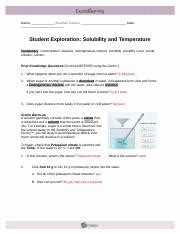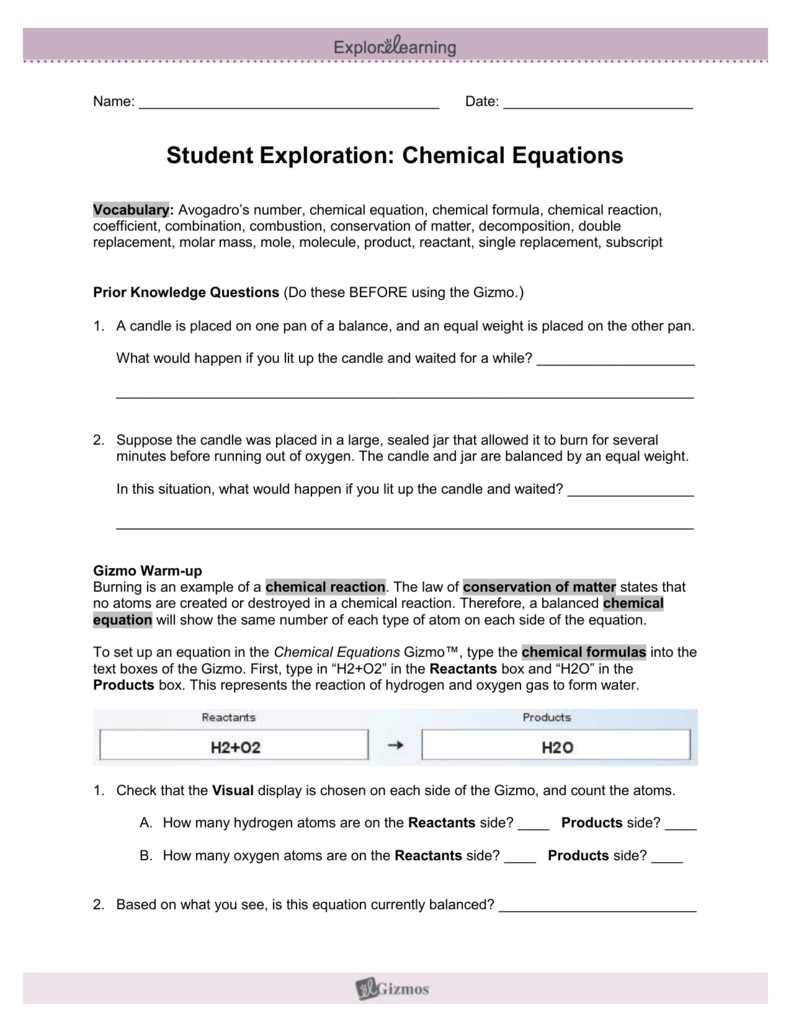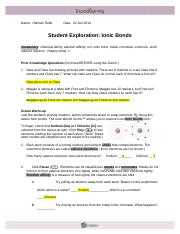
Tides have always been a fascinating natural phenomenon. The rise and fall of ocean waters have intrigued scientists and curious individuals alike for centuries. Understanding tides is crucial not only for navigational purposes but also for comprehending the complex interactions between the Earth, the Moon, and the Sun. The Student Exploration Tides answer key provides students with an opportunity to dive deeper into the world of tides and their underlying principles.
This answer key serves as a comprehensive guide, assisting students in unraveling the complexities of tidal movements. It offers a systematic breakdown of the concepts covered in the exploration, providing a clear explanation of each component and its role in shaping tides. From lunar phases to gravitational forces, this answer key offers a detailed analysis that allows students to grasp the underlying science behind tides.
By studying the Student Exploration Tides answer key, students can enhance their knowledge of not only tidal patterns but also the practical applications of this scientific understanding. Whether it be predicting high and low tides for coastal communities or harnessing the power of tidal energy, this exploration equips students with the information needed to appreciate the real-world implications that tides have on our daily lives.
Understanding Tides: Student Exploration Answer Key
In the exploration activity about tides, students were asked to investigate the factors that influence the height and timing of ocean tides. By changing the positions of the Sun and Moon and observing the resulting tide patterns, students were able to gain an understanding of how these celestial bodies interact with the Earth to create tides.
One key finding from the activity was that the gravitational pull of the Moon is the primary factor in creating tides. As the Moon orbits around the Earth, its gravitational pull causes a bulge in the ocean on the side of the Earth that is facing the Moon. This results in a high tide. On the opposite side of the Earth, there is also a high tide caused by the Moon’s gravitational pull. These high tides are referred to as “lunar tides.”
Another important observation students made was that the position of the Sun relative to the Earth and Moon also influences tides. When the Sun, Earth, and Moon are aligned in a straight line, the gravitational pull of the Sun enhances the gravitational pull of the Moon, creating even higher tides, known as “spring tides.” Conversely, when the Sun and Moon are at a right angle to each other, the gravitational pull of the Sun partially cancels out the gravitational pull of the Moon, resulting in lower tides, known as “neap tides.”
The activity also highlighted how the Earth’s rotation affects the timing of tides. Since the Earth rotates once every 24 hours, there are two high tides and two low tides in a day. However, due to the Moon’s gravitational pull, the timing of the tides is not exactly 12 hours apart. This is why high and low tides occur at different times each day.
The student exploration activity on tides provided a hands-on way for students to understand the complex factors that influence ocean tides. It allowed them to see firsthand how the positions of the Sun, Moon, and Earth affect the height and timing of tides. By actively engaging with the material and making observations, students were able to gain a deeper understanding of this natural phenomenon.
Exploring the Concept of Tides
Tides are the regular rise and fall of the sea level caused by the gravitational pull of the moon and the sun. They are an important natural phenomenon that significantly affects coastal regions and marine ecosystems. Understanding the concept of tides is crucial for various fields of study, including oceanography, meteorology, and navigation. By exploring the mechanics behind tides, scientists are able to predict their patterns and behaviors, providing valuable information for coastal communities and industries.
The gravitational pull of the moon is the primary force behind tides. As the moon orbits around the Earth, its gravitational force creates a bulge of water on the side of the Earth facing the moon, causing a high tide. At the same time, a high tide is also formed on the opposite side of the Earth due to the centrifugal force at work. These high tides are referred to as “lunar tides.” The sun also contributes to tides, although to a lesser extent. When the gravitational pull of the sun aligns with the moon’s, high tides known as “spring tides” occur. When the gravitational pull of the sun counteracts the moon’s, low tides known as “neap tides” occur.
Understanding the complex patterns of tides is essential for a variety of reasons. For coastal communities, tides affect daily activities such as fishing, boating, and beach recreation. Tidal patterns can also impact the stability of coastal infrastructure, especially during storms and extreme weather events. For marine organisms, tides play a crucial role in their ecosystems. Many species, such as migratory birds and certain types of fish, rely on the ebb and flow of tides for navigation and feeding. Tides also have significant implications for climate change research, as rising sea levels are a direct consequence of tidal patterns.
In conclusion, exploring the concept of tides provides valuable insights into the behavior of our oceans and their impact on coastal regions. The study of tides is not only a fascinating scientific endeavor but also has practical applications in various industries and fields. By understanding the mechanics and patterns of tides, we can better predict and adapt to their effects, ensuring the sustainability and well-being of our coastal communities and ecosystems.
The Influence of Gravitational Forces

The tides, the rise and fall of sea levels, are primarily caused by the gravitational forces between the Earth, the Moon, and the Sun. These forces create a gravitational pull on the ocean water, resulting in the movement of water across the Earth’s surface. The interaction between these celestial bodies and the Earth’s oceans is a complex and fascinating phenomenon that impacts various aspects of marine and coastal ecosystems.
The Moon, being much closer to the Earth than the Sun, has a stronger gravitational force that primarily influences the tides. As the Moon orbits around the Earth, its gravitational pull causes a bulge of water to form on the side of the Earth facing the Moon, resulting in a high tide. On the opposite side of the Earth, there is also a high tide due to the gravitational force pulling the Earth away from the water on that side. These are known as the lunar tides and occur approximately every 12 hours and 25 minutes.
While the Sun’s gravitational force is weaker than that of the Moon, it also plays a role in the tides. When the Sun, Moon, and Earth align, their combined gravitational forces create higher tides, known as spring tides. Conversely, when the Sun and Moon are at right angles to each other, their gravitational forces partially cancel each other out, resulting in lower tides, known as neap tides. These tidal patterns occur in a cycle that repeats approximately every 29.5 days, coinciding with the phases of the Moon.
The influence of gravitational forces on tides is not only important for understanding the Earth’s oceans but also has practical implications. Tides affect navigation, coastal erosion, and the distribution of marine organisms. Additionally, tidal energy is being explored as a potential renewable energy source due to the predictable and regular nature of tides. Overall, the study of gravitational forces and their impact on tides provides valuable insights into the functioning of our planet’s marine environment.
Factors Affecting Tidal Patterns
The tides are primarily influenced by several key factors, including the gravitational pull of the Moon and the Sun, as well as the shape of the coastline and the depth of the water in a particular area.
1. Lunar Influence: The Moon’s gravitational pull is the main driver of tides. As the Moon orbits the Earth, its gravitational pull causes the water on the Earth’s surface to bulge, creating a high tide. The areas opposite the Moon experience another high tide, known as the “lunar bulge.” The areas in between these two bulges experience low tides.
2. Solar Influence: While the Moon has a greater impact on tides, the Sun also plays a role. When the alignment of the Sun, Moon, and Earth forms a straight line, known as the syzygy, the gravitational pull of the Sun combines with that of the Moon to create higher high tides, known as spring tides. When the Sun, Moon, and Earth form a right angle, known as the quadrature, the gravitational forces counteract each other, resulting in lower high tides, known as neap tides.
3. Topography of the Coastline: The shape of the coastline can affect tidal patterns. For example, when a coastline has a narrow inlet or bay, the water can be funneled in and out during tides, amplifying the height and strength of the tidal currents. In contrast, a coastline with a wide, open bay may experience more gradual and less extreme tidal variations.
4. Water Depth: The depth of the water in a particular area can impact tidal patterns. In shallow waters, the tidal bulges created by the gravitational forces of the Moon and Sun are more pronounced, leading to larger tides. In deeper waters, the tidal range is typically smaller.
These factors, along with other local factors such as wind patterns, can contribute to the complex and varied tidal patterns observed in different regions around the world. Understanding these factors is essential for predicting and managing the effects of tides in coastal areas.
Investigating the Relationship between the Moon and Tides
Tides are a fascinating phenomenon that occur in the Earth’s oceans and are primarily influenced by the gravitational pull of the moon. The gravitational force exerted by the moon creates a tidal bulge on the side of the Earth facing the moon and also on the opposite side. As a result, we experience two high tides and two low tides each day. Studying the relationship between the moon and tides can help us understand and predict these tidal patterns.
One way to investigate this relationship is through the use of student exploration activities. These activities provide hands-on experiences for students to learn about tides and explore the scientific concepts behind them. By engaging in experiments and data analysis, students can observe the effects of different moon phases on tidal patterns.
During these activities, students may analyze real-time data from tide stations, such as water level measurements and moon phase data. This allows them to make connections between the moon’s position in the sky and the corresponding tidal patterns. For example, students may discover that during a full moon or new moon, when the moon, Earth, and sun are aligned, the gravitational pull is stronger, resulting in higher high tides and lower low tides.
By investigating the relationship between the moon and tides, students develop a deeper understanding of the factors that influence tidal patterns. This knowledge can then be applied to real-life situations, such as predicting high or low tides for activities like boating or beachcombing. Furthermore, it fosters critical thinking skills as students analyze data and draw conclusions about the complex interplay between celestial bodies and oceanic phenomena.
Understanding Spring and Neap Tides
Tides are the rise and fall of the sea level, influenced by the gravitational forces of the Moon and the Sun. These forces create two main types of tides: spring tides and neap tides.
Spring tides: Spring tides occur when the gravitational forces of the Moon and the Sun align, creating a higher than normal tidal range. This happens during the full moon and the new moon phases. The combined gravitational pull of the Moon and the Sun causes the water to bulge, resulting in higher high tides and lower low tides. Spring tides are not exclusive to the spring season; they can occur at any time of the year.
Neap tides: Neap tides occur when the gravitational forces of the Moon and the Sun are perpendicular to each other. This happens during the first and third quarter moon phases. The gravitational pull of the Moon and the Sun counteract each other, resulting in a smaller tidal range. Neap tides have lower high tides and higher low tides compared to spring tides. Like spring tides, neap tides can occur at any time of the year.
It’s important to understand the difference between spring and neap tides, as they can have an impact on various coastal activities. Spring tides, with their higher tidal range, can result in increased flooding, stronger currents, and higher waves, making navigation and beach activities more challenging. Neap tides, on the other hand, have a smaller tidal range, which can be beneficial for activities like fishing or boating in shallow areas.
To better understand the tidal patterns in a specific area, it is helpful to consult tidal charts or use online resources that provide information on the predicted tides. This knowledge can be useful for planning activities such as beach outings, fishing trips, or even surfing sessions.
- Spring tides occur during the full moon and the new moon phases.
- Neap tides occur during the first and third quarter moon phases.
- Spring tides have a higher tidal range, while neap tides have a smaller tidal range.
- Knowledge of tidal patterns is important for planning coastal activities.
Examining the Role of the Sun in Tidal Patterns

When studying tides, it is essential to consider the role of various celestial bodies, including the sun. The sun plays a crucial role in influencing tidal patterns on Earth. Its gravitational pull, combined with the moon’s, affects the distribution of water on the planet’s surface.
Solar tides are caused by the gravitational force of the sun and occur twice a day. These tides are less significant than lunar tides but still contribute to the overall tidal patterns. Solar tides have a considerable impact on the regularity and magnitude of tides in coastal regions worldwide.
During a solar eclipse, the alignment of the sun, moon, and Earth can lead to unique tidal phenomena known as spring tides. Spring tides occur when the gravitational forces of the sun and moon align, resulting in higher-than-average high tides and lower-than-average low tides. This alignment intensifies the gravitational pull on Earth’s water, leading to pronounced tidal variations.
Tidal range is another aspect influenced by the sun. The distance between the Earth and the sun changes throughout the year due to its elliptical orbit. This variation in distance affects the strength of the sun’s gravitational force and, consequently, the tidal range. When the Earth is closest to the sun during the perihelion position, the tidal range tends to be more significant. Conversely, during the aphelion position when the Earth is farthest from the sun, the tidal range is generally smaller.
In conclusion, the sun plays an integral role in tidal patterns. Its gravitational force, combined with that of the moon, influences the distribution of water on Earth and leads to the formation of different tides. Understanding the Sun’s influence on tides is crucial for various fields such as coastal engineering, navigation, and marine biology.